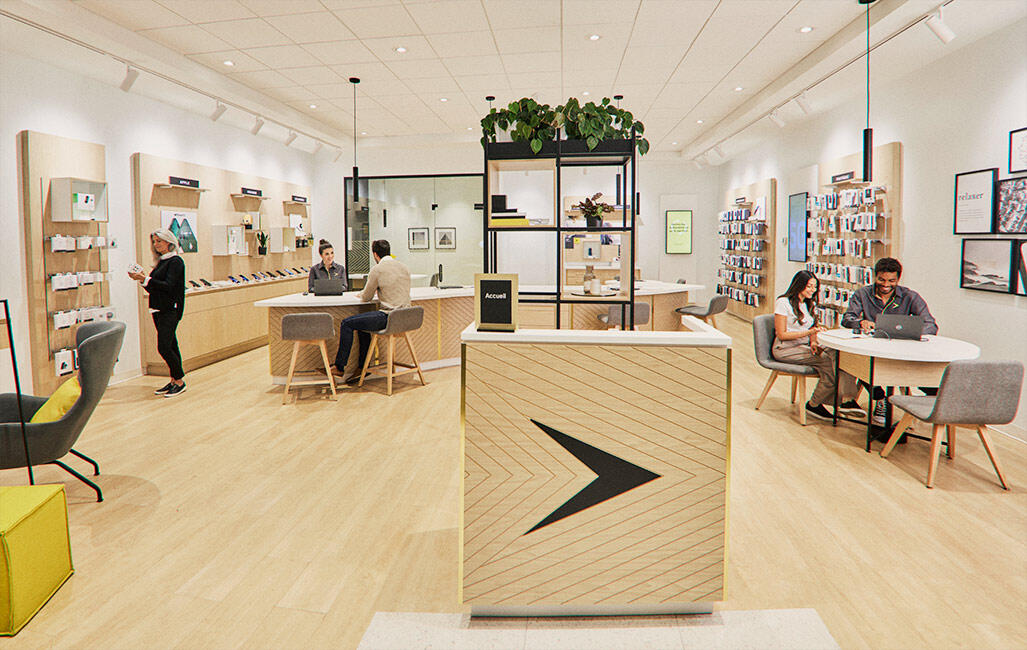
Whether the goal is to collect data for decision-making purposes or to automate recurring tasks, the Internet of Things (IoT)—i.e. the billions of connected devices worldwide—is at the heart of several organizations’ digital transformation. The technology is also a game changer for buildings, hence the name “smart building.” If you are the owner of a senior home (in french only), real estate development, or shopping centre, the following article is for you!
IoT: the amalgam of several technologies
The IoT is a set of technological solutions that work together. The sensor is the first component: it is the point of contact between the real world and the Internet. Completely independent, it is responsible for gathering and transmitting data.
The sensors that require an LTE connection work on a powerful network, like the one offered by Videotron Business. Thanks to our partnership with X-TELIA, sensors based on the LoRaWAN communication protocol, which are better suited for smart buildings, can be integrated into a dedicated network.
Applications are user-friendly interfaces that allow you to manage, track, and configure your connected objects. The platform, for its part, brings all these components together and allows you to oversee their operation via a dashboard.
The IoT is one of the four major technologies to look out for at this time. New possibilities are emerging, particularly in the smart building area. Once deployed, these new technologies will allow your building to stand out when it comes to energy efficiency, comfort, surveillance, and security.
Smart buildings: multiple benefits
The decision to transform a building into a smart one doesn’t happen over night. But this decision can have some significant benefits for the given organization. Here are a few examples of connected solutions you could benefit from with the IoT.
1) Connected hygiene simplifies your daily life
New sanitary measures have emerged these past few years as a result of the COVID-19 pandemic. A bottle of hand sanitizer is now in place at the entrance of most public spaces. This measure aims to protect both customers and staff alike. However, it can happen that the dispensers are empty due to the labour shortage, or simply because an employee forgot to refill it.
Connected anti-bacterial gel, soap, hand towel, and toilet paper dispensers now make it possible to know the amount of product remaining in real time. Now there’s an effective way to improve inventory management and optimize orders with your suppliers. Workers know precisely when the dispensers need to be refilled. You can even monitor the amount of trash in your garbage bins!
2) Smart meeting rooms boost productivity
Optimizing the use of conference rooms is not always black and white. Locales are often booked by users who then, for one reason or another, don’t show up. Some rooms are too big for the number of participants expected or, inversely, employees are sometimes crammed into a space that is too small to accommodate them all.
Different types of sensors—a presence detector or people or occupancy counter, for example—help manage meeting rooms appropriately. You can now check space availability in real time and make the best decision for your team.
3) Better air quality in your building
How’s the air quality in your facilities? It is possible to detect carbon dioxide (CO2) and other harmful components, such as methane, ozone, or ammoniac. And beyond detection, connected devices combined with a smart ventilation system can also help ventilate the rooms as needed. Clean air: an excellent way to ensure the health and safety of the building’s occupants.
4) Optimized energy management
It is highly likely that heating and air conditioning account for a good portion of your energy bill right now. But the IoT can change that. Smarter systems can now minimize energy waste. Occupancy sensors can, for example, send a signal to limit heating when the room is unoccupied.
Automated blinds can also roll up or down based on the temperature outside. In addition to improving your guests’ comfort, it will reduce energy consumption costs and contribute to the company’s energy efficiency efforts.
5) Predictive maintenance at the service of your equipment
Predictive maintenance of your equipment is usually scheduled ahead of time, at regular intervals. This means that once a year, your technician performs said maintenance on the equipment in question, regardless of whether it is too early or too late! Wouldn’t it make more sense to detect and rectify equipment issues before there’s a breakdown?
With predictive maintenance on your building’s various equipment—think elevators, for example—you extend their useful life and limit repair costs. Connected sensors notify you when actions are required, just in time, before a technical issue or outage occurs.
Proper planning: the key to success
So, are you ready to move forward with your technological vision? Take the time to speak with your dedicated representative. Your trusted telecommunications service provider can set out a plan to ensure your IoT solution is adapted to the needs of your building. Whether it is to support your employees with the upcoming changes or to avoid the pitfalls you may come across along the way, appropriate strategic planning is key. When it comes to smart buildings, this early preparatory step is the very foundation of your project!
15 February 2023, By Videotron Business






